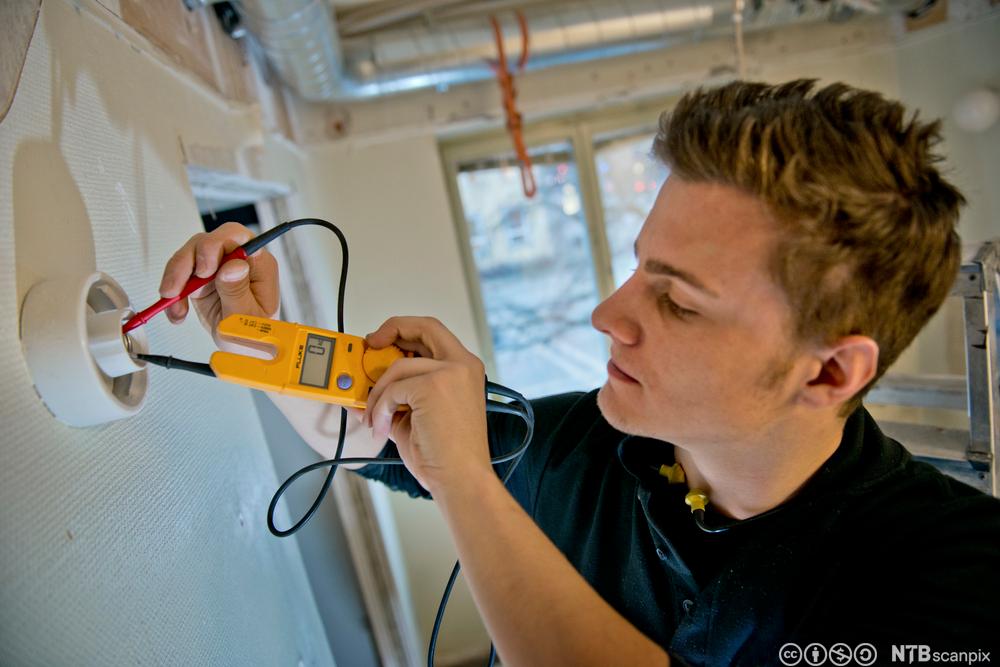Fagartikkel
Safety First (Electrical)
Working with electricity is extremely dangerous. An electric shock can be fatal even with small amounts of current. It is therefore essential that you take some safety precautions to avoid being electrocuted.

Bilde: Jens Sølvberg / CC BY-NC-SA 4.0
Safety first
0:00
-0:00
Lyd: Jan-Louis Nagel / CC BY-SA 4.0
Electrical Tools. Bilde: k_unit / CC BY-SA 4.0
Check the names of the tools on Flickr.
Below are listed some basic safety rules that should be observed when working with electricity.
- Never work on a live installation. Make sure that the power is switched off, either by turning off the main switch or by disconnecting the circuit you are going to work on. Put a note on the fuse box in case someone else switches the power on by accident.
- Never work alone on a high voltage installation. If something unforeseen should happen it could be a matter of life and death to have someone there to give assistance.
- Make sure that you know exactly what you are going to do before you start. Electric installations are not for amateurs to fiddle with.
- Remove rings, bracelets and watches. These things are highly conductive and may easily give you the ground connection that is needed to give you an electric shock.
- Always use insulated, clean tools. Keep your workplace tidy and concentrate on your work.
- Two conditions are needed for you to get an electric shock: You must touch a live appliance, such as an uninsulated cable or a terminal, and you must have a ground connection. To avoid being earthed, it is smart to wear shoes with rubber soles, or stand on a rubber mat. For the same reason, you should never work with wet hands or damp clothes, or in any damp or wet environment.
- There should also be a fire extinguisher and a first aid kit at hand in case of emergency.
The severity of an electric shock will depend on two factors - amount of current and duration of exposure to electric current.
- The amount of current. Even small amounts of current can be fatal; 10mA will give you a partial shock and cramps and currents of 100mA and above will most likely be deadly. The human body consists of nearly 75% water, so it is highly conductive. The voltage does not burn, but it will give you serious convulsions and paralyze the muscles.
- The shock will also depend on the amount of time a person is connected. If a person receives an electric shock it can be hard for him to let go because of the cramps. Then it is crucial that you don't grab the injured person by the skin to pull him away. In that way you will also get an electric shock. Use a piece of dry cloth or some insulated object to pull him away.
If current and voltage pass through a person's body, the heart will most likely stop and he will stop breathing. It is therefore important to be familiar with first aid and resuscitation procedures, like mouth-to-mouth and heart compression.
Comprehension
- What are the two conditions necessary to give you an electric shock?
- What are the two conditions that will decide the severity of the shock?
- How can you best avoid being grounded?
- Which is more dangerous - voltage or current?